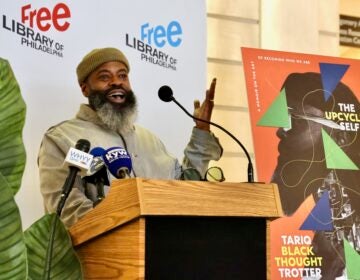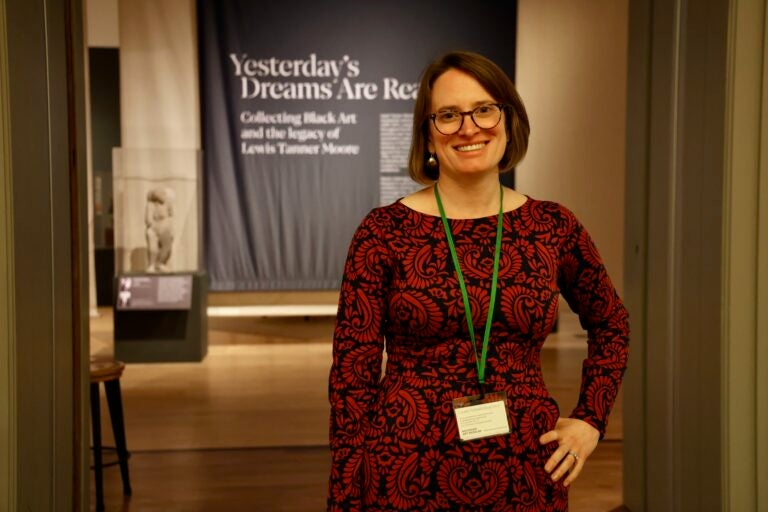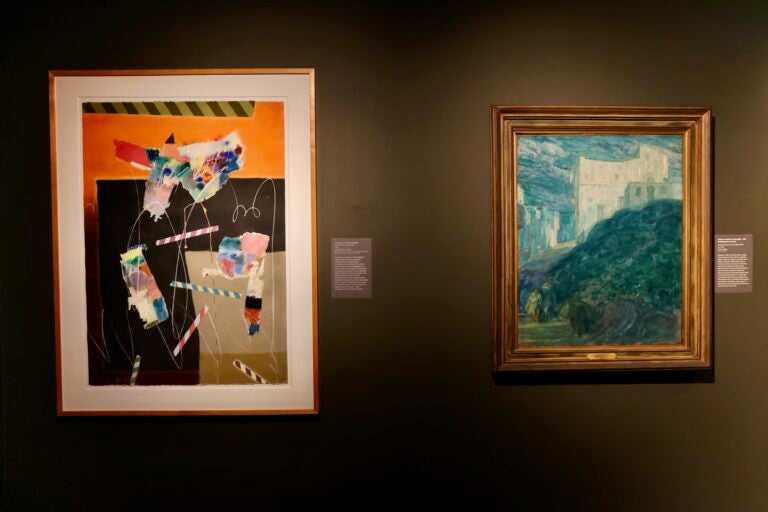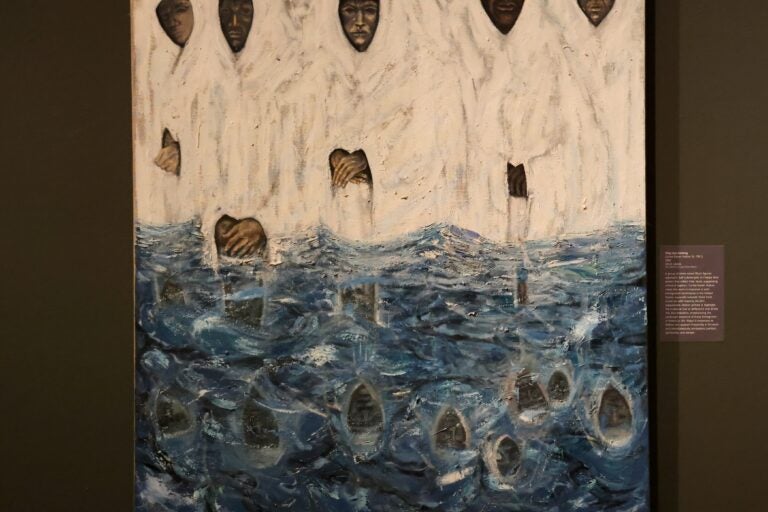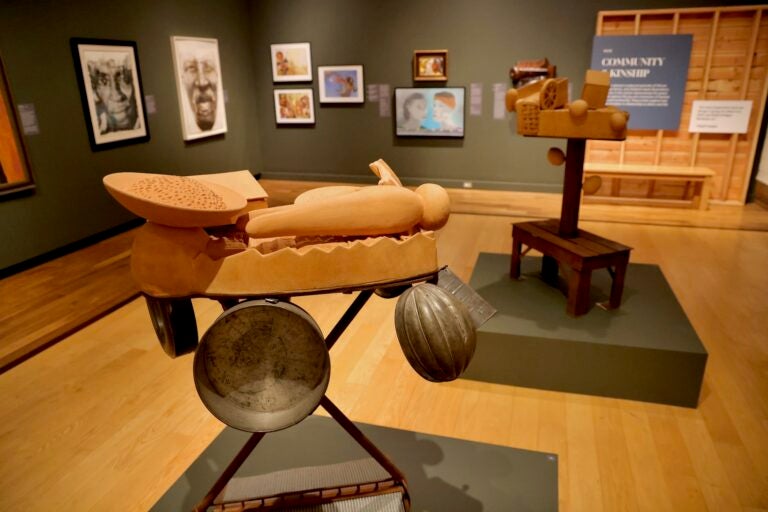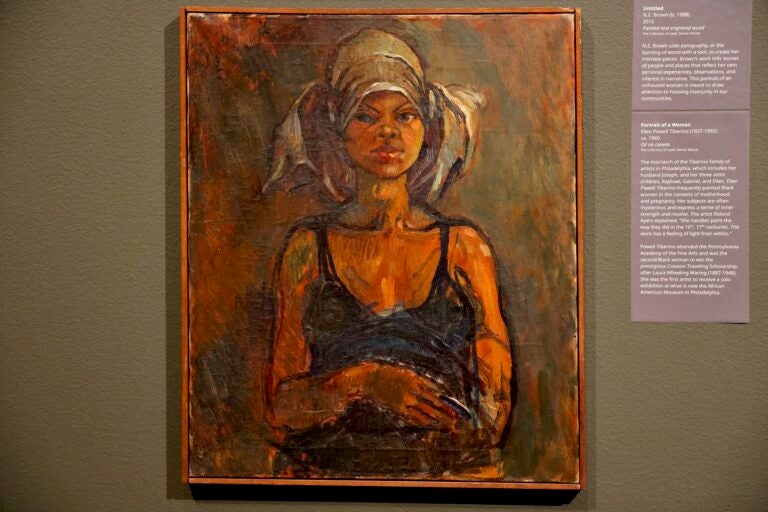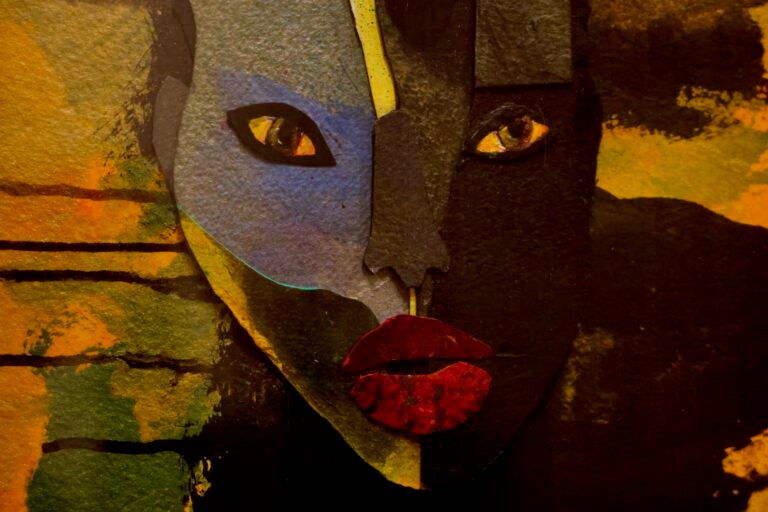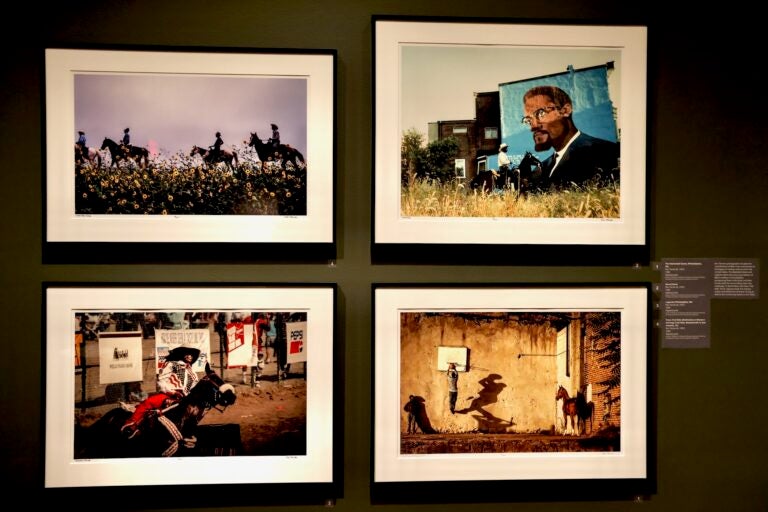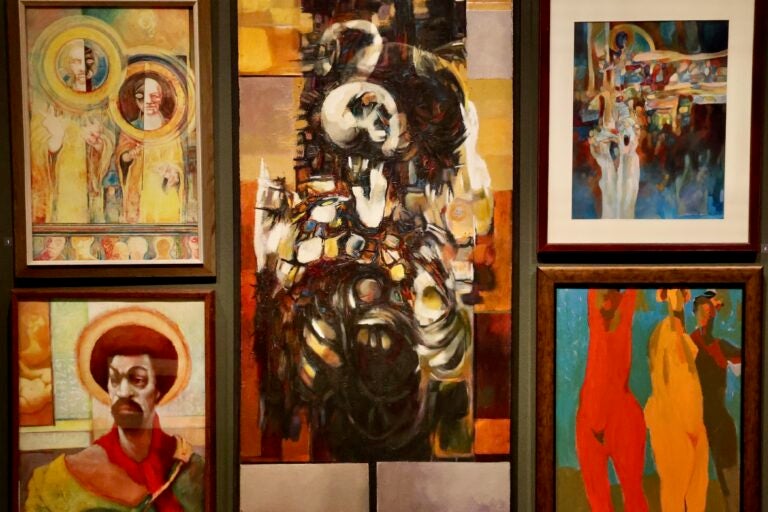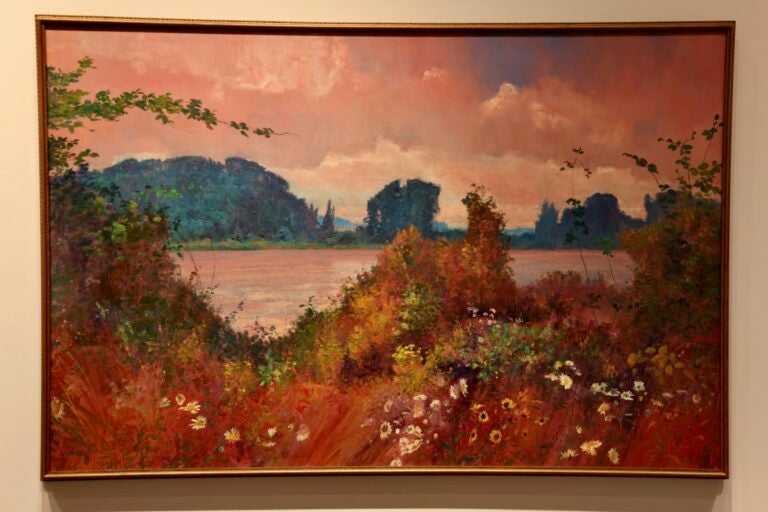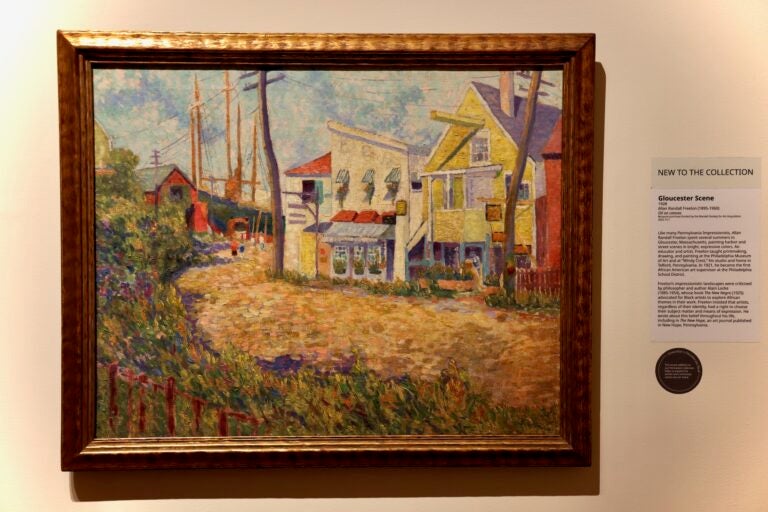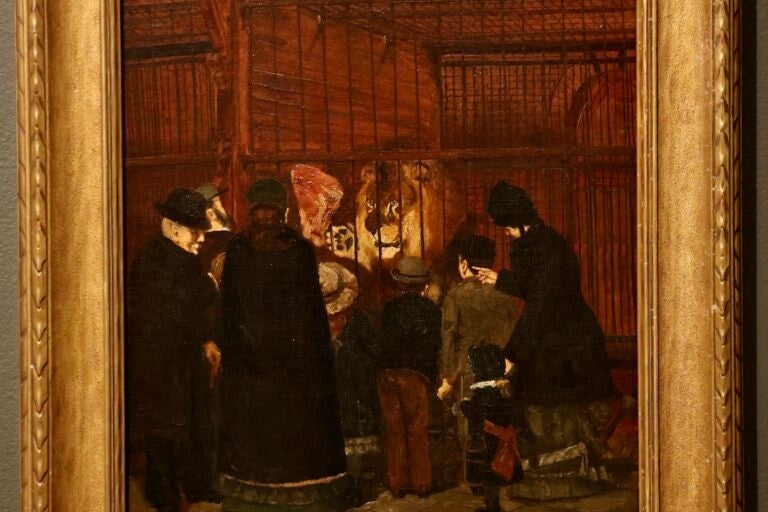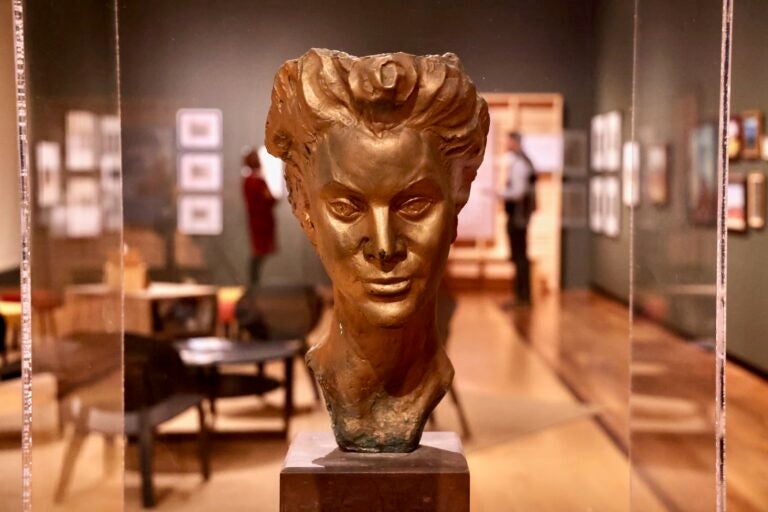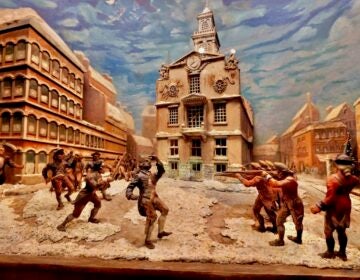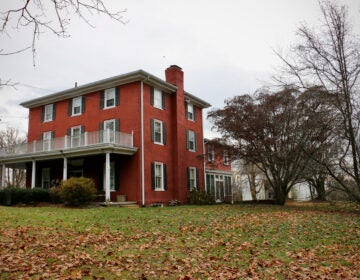Lewis Tanner Moore spent his life collecting Black art. His legacy is on view at Doylestown’s Michener Art Museum
Moore, who died last year, championed Black artists and left an indelible mark on the art world. His collection numbered in the "hundreds, maybe thousands."
From Philly and the Pa. suburbs to South Jersey and Delaware, what would you like WHYY News to cover? Let us know!
When Lewis Tanner Moore collected the work of an artist, he often ushered the artist into a relationship that would last a long time and cover a lot of ground.
He and Donald Camp bonded over Camp’s monumental-sized headshots of Black individuals, two of which are now on view in “Yesterday’s Dreams Are Real: Collecting Black Art and the Legacy of Lewis Tanner Moore” at the Michener Art Museum in Doylestown.
They also shared a love of French food.
“We both loved really good French cheese. And a good one is hard to find,” Camp said while recalling an evening trying to impress Moore and his wife. “He and Judy were coming to dinner, and I had found this one cheese. It was really rare. He walks in the door with the same cheese.”
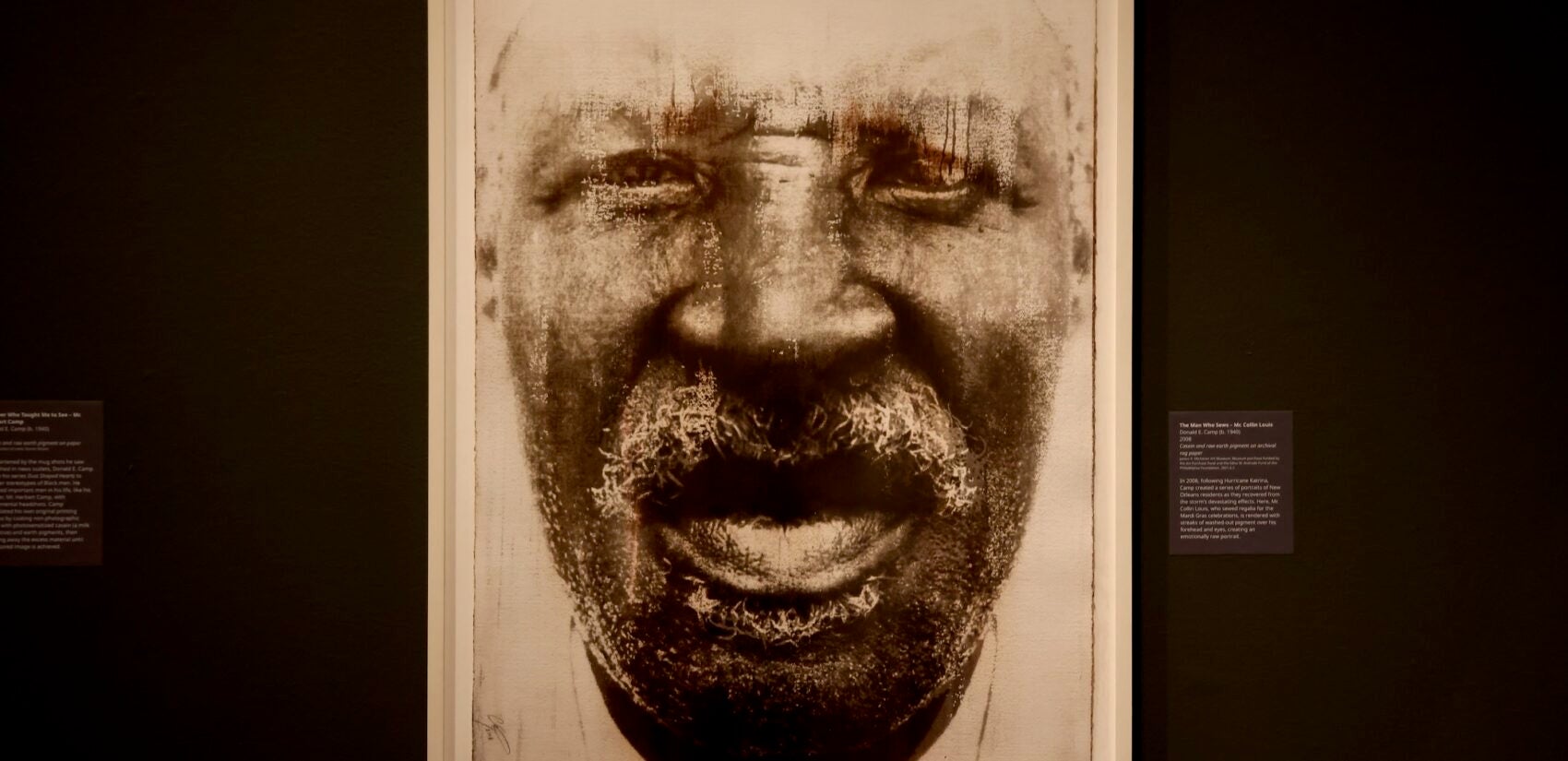
Moore, who died last year at age 70 from a heart attack, was known for keeping artists on their toes. He was a collector of work by Black artists and the descendent of a major Black artist — his great uncle was Henry Ossawa Tanner, the Philadelphia-born-and-bred painter who became the first African American artist to achieve international acclaim. Tanner’s house in North Philadelphia is the focus of a preservation effort.
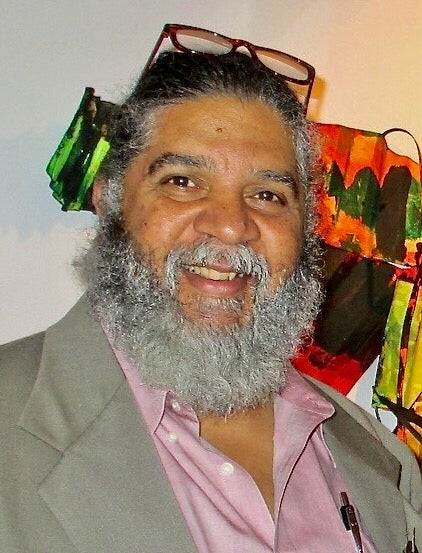
When Moore visited Barbara Bullock in her studio in 2022, he saw an untitled paper collage she was working on and told her not to fuss with it anymore.
“She said that he came to her studio and saw it and said, ‘This is perfect. Stop.’ Then acquired the piece,” said Michener curator Laura Igoe. “He knew when it was ready for him.”
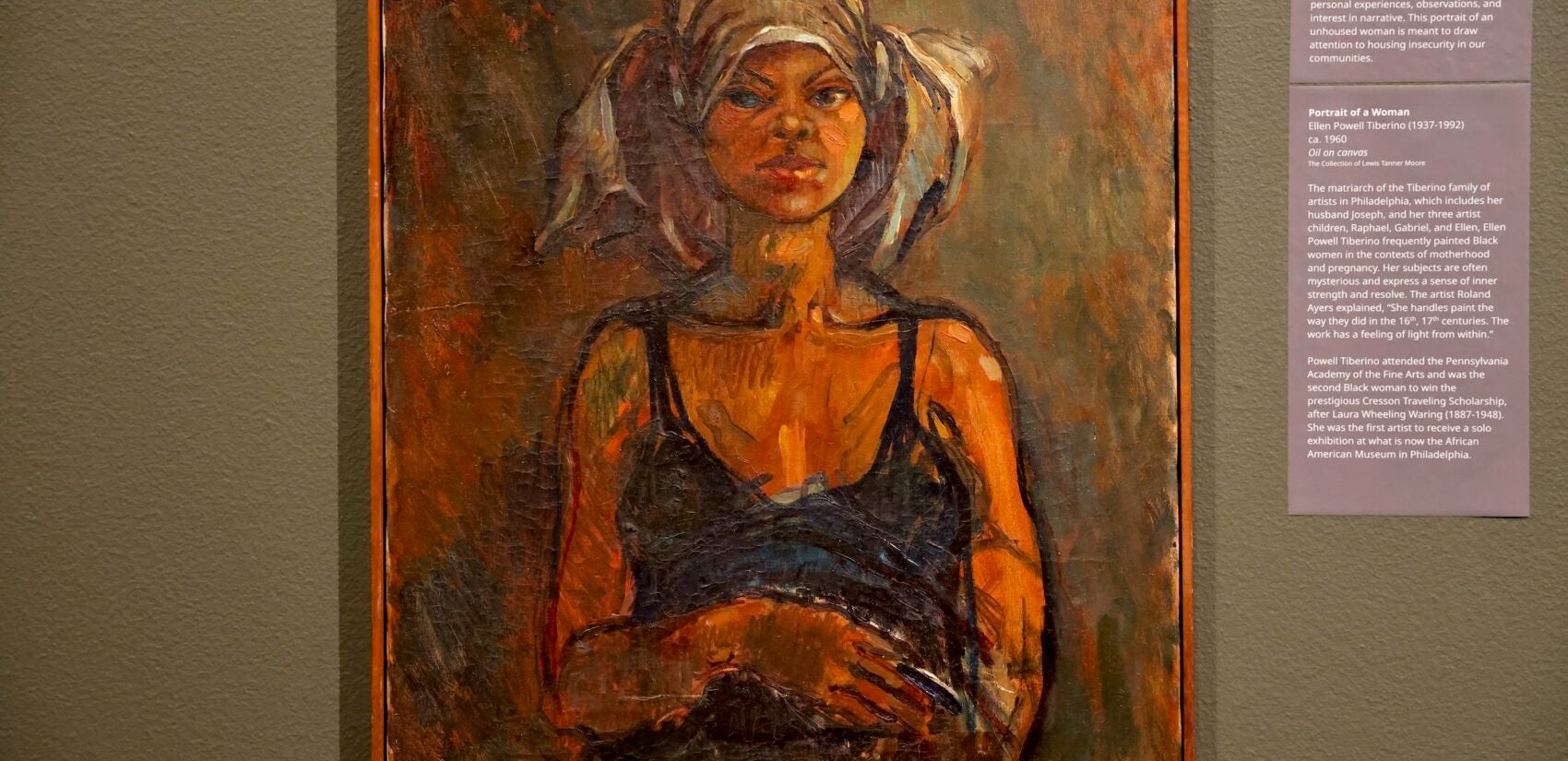
Artist Curlee Raven Holten said Moore would barter art over dinner.
“He had a dinner guest who was a major collector. The dinner guest saw one of my pieces on the wall and said he wanted that piece,” Holten recalled. “Lewis said, ‘I’ll give him this piece off the wall if you replace it.’ So I sold the piece that Lewis had in his collection and, of course, replaced it.”
“Yesterday’s Dreams Are Real” features about 90 paintings, sculptures and mixed-media works related to Moore’s collection, which he had been building for more than 50 years. The collection is primarily composed of contemporary artists, many of whom Moore knew personally.
Igoe could not be certain how many pieces are in the Moore collection — “hundreds, maybe thousands” — including works by Paul F. Keene, Ellen Tiberino, Selma Burke, Faith Ringgold, Syd Carpenter, Leroy Johnson, Louis B. Sloan and Allan Freelon.
Born into a legacy
Moore grew up surrounded by the legacy of his ancestor, Henry O. Tanner, under the tutelage of his father, an attorney also named Lewis Tanner Moore, who collected art and co-founded the elite Black society organization The Pyramid Club.
When the younger Moore was a teenager at Chestnut Hill Academy, he noticed his art classes featured nothing by the artists whose work he lived with at home, nor any artists not from the dominant white, male culture. So he organized an exhibition of Black artists at the school.
Moore grew up with paintings of his great uncle nearby — he even hung an original oil by Tanner in his college dorm room — but it was Paul Keene who first got him excited about contemporary art. His father collected work by Keene, who had become a family friend.
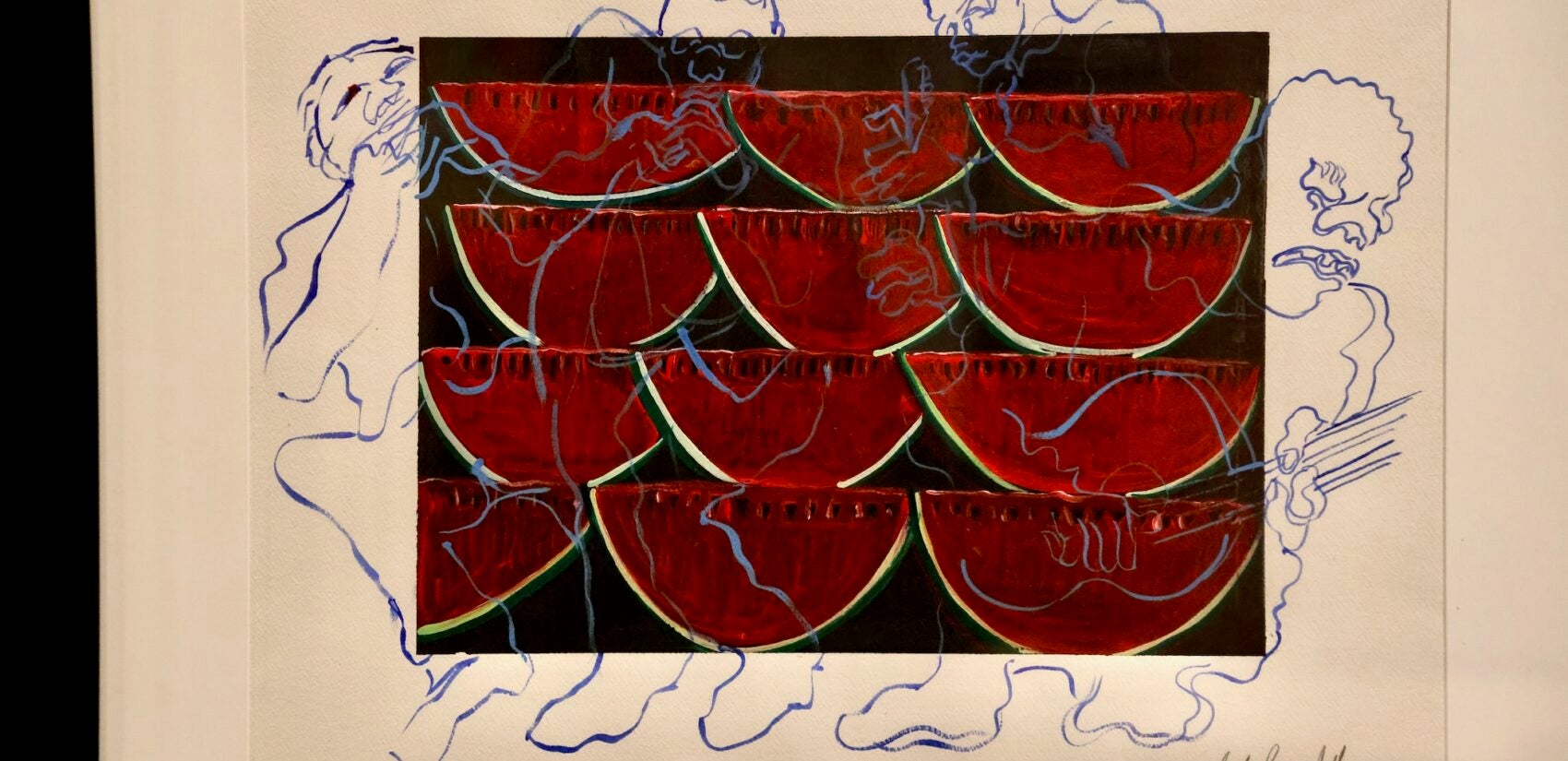
“Early on, I had a chance to see him with his beret and his pipe. He was always cool. He was always smooth,” said Moore in a 2021 video conversation with the Brandywine Workshop. “And he was producing these images that just held the wall.”
As a teenager, Moore began acquiring art pieces by artists he knew and liked, and never stopped.
“He had met so many artists of color that had little access to the marketplace, had little opportunity to exhibit and had little opportunity to have their work documented,” Holten said. “He believed in the creative enterprise, that it was a validation of our humanity. It was a very affectionate connection.”
Being in the conversation
Camp said his relationship with Moore changed how he thought about his art. Once his work entered Moore’s collection, it became part of something greater.
“He introduced something to me as an artist that I never thought of. He told me my work deserved to be a part of the conversation,” Camp said. “I never thought about my art being part of a conversation. I knew that’s what I was doing, but I never thought about that word. That word became very, very important to me.”
When Moore first acquired his work in the 1990s, Holten said he felt “anointed.”“I knew how important he was as a collector. I knew about the family history,” he said. “But when I got to his home and saw all the other artists, I felt like I thought I was special. I realized I’m not so special. There’s so many of them.”
“I think all of us had that experience. It was validating for each of us, but we realized how many artists that he was also supporting, and we began to meet those other artists and develop projects with them,” he said.
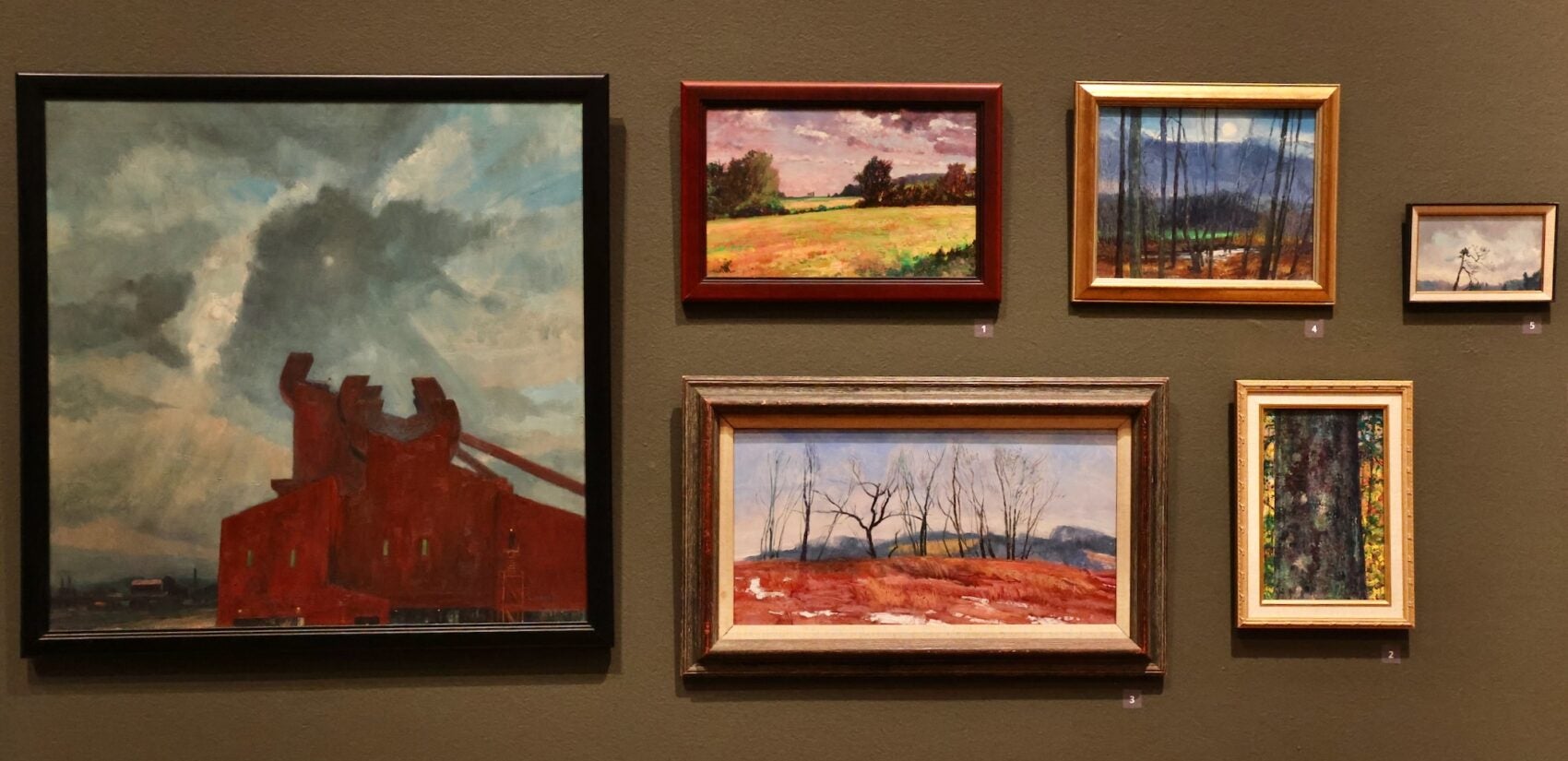
Moore also influenced museums to develop their collections with more Black artists. The title of the show, “Yesterday’s Dreams Are Real,” comes from a painting by the late Philadelphia abstract artist Moe Brooker, which the Michener recently acquired at Moore’s urging. This exhibition is the first time the museum has displayed it.
Several pieces in the exhibition are from Michener’s own collection, representing artists in Moore’s collection. Igoe said Moore, who lived near the museum, had been informally involved with it for many years, nudging curators to consider more Black art.
“We wanted to honor Louis’ legacy not just by sharing his collection, but also sharing work we acquired recently because of his encouragement,” she said.
“Yesterday’s Dreams are Real” will be on view until July 27. A panel discussion with some of the artists in the show, including Camp, Holton and artist Berrisford Boothe, will happen on Thursday, Feb. 27 at 7:00 p.m.

Get daily updates from WHYY News!
WHYY is your source for fact-based, in-depth journalism and information. As a nonprofit organization, we rely on financial support from readers like you. Please give today.



